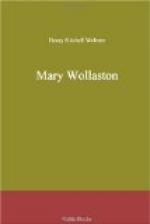“Yes,” she said, “they’re expecting you. Come in and I’ll show you the piano.”
She might, of course, merely have indicated the drawing-room door to him with a nod and gone up-stairs, but she was determined now to wait and hear him say something more. So she led the way into the drawing-room and quite superfluously indicated the Circassian grand with a gesture. Then she looked back at him quickly enough to surprise the expression that flickered across his face at the sight of it. A mere cocking of one eyebrow it was, but amusingly expressive. So, too, was the way he walked over toward it, with an air of cautious determination, of readiness for anything, that made Paula want to laugh. He dropped down sidewise on the bench, turned up the lid and dug his fingers into the keyboard.
At the noise he evoked from that pampered instrument she did laugh aloud. It was not a piano tuner’s arpeggio but a curiously teasing mixed dissonance she couldn’t begin to identify. She thought she heard him say, “My God!” but couldn’t be sure. He repeated his chord pianissimo and held it down, reached up and echoed it in the upper half of the keyboard; then struck, hard, two octaves in the bass.
“What a piano!” he said. “What a damned piano!” He made a sort of effort to pull himself up; apologized (she thought that was what he meant to do) for the damn. But as he turned back to the piano and struck another chord or two, she could see that his sense of outrage was mounting steadily all the time.
“You can’t tune a piano like this.”—He pushed up the cover and stared gloomily at the strings. “A mincing sickly thing like this. It’s all wrong. The scale is all wrong. The man who designed it ought to be hung. But he called it a piano and sold it for a piano and I’m expected to come in and tune it. Slick and smear it over and leave it sounding sicklier and tubbier and more generally disgusting than ever. You might as well take a painted harlot off the streets”—he glared at the ornate extravagance of the case—“and expect to make a gentlewoman of her with one lesson in deportment. I won’t tune it. It’s better left as it is. In its shame.”
“Well,” said Paula, letting go a long breath, “you’ve said it.”
Then she dropped into a chair and began to laugh. Never again, she felt sure, would the drawing-room piano be able to cause her a moment’s irritation. This astonishing piano tuner of Lucile’s had converted it, with his new christening, into a source of innocent merriment. “The painted harlot” covered the ground. Clear inspiration was what that was. The way he went on glowering at it, digging every now and then a new and more abominable chord out of its entrails made her mirth the more uncontrollable.
“It isn’t funny, you know, a thing like this,” he remonstrated at last. “It’s serious.”
“It would be serious,” she retorted with sudden severity, “if you had said all that or anything in the least like that to Miss Wollaston. Because she really loves it. She has adopted it.”




